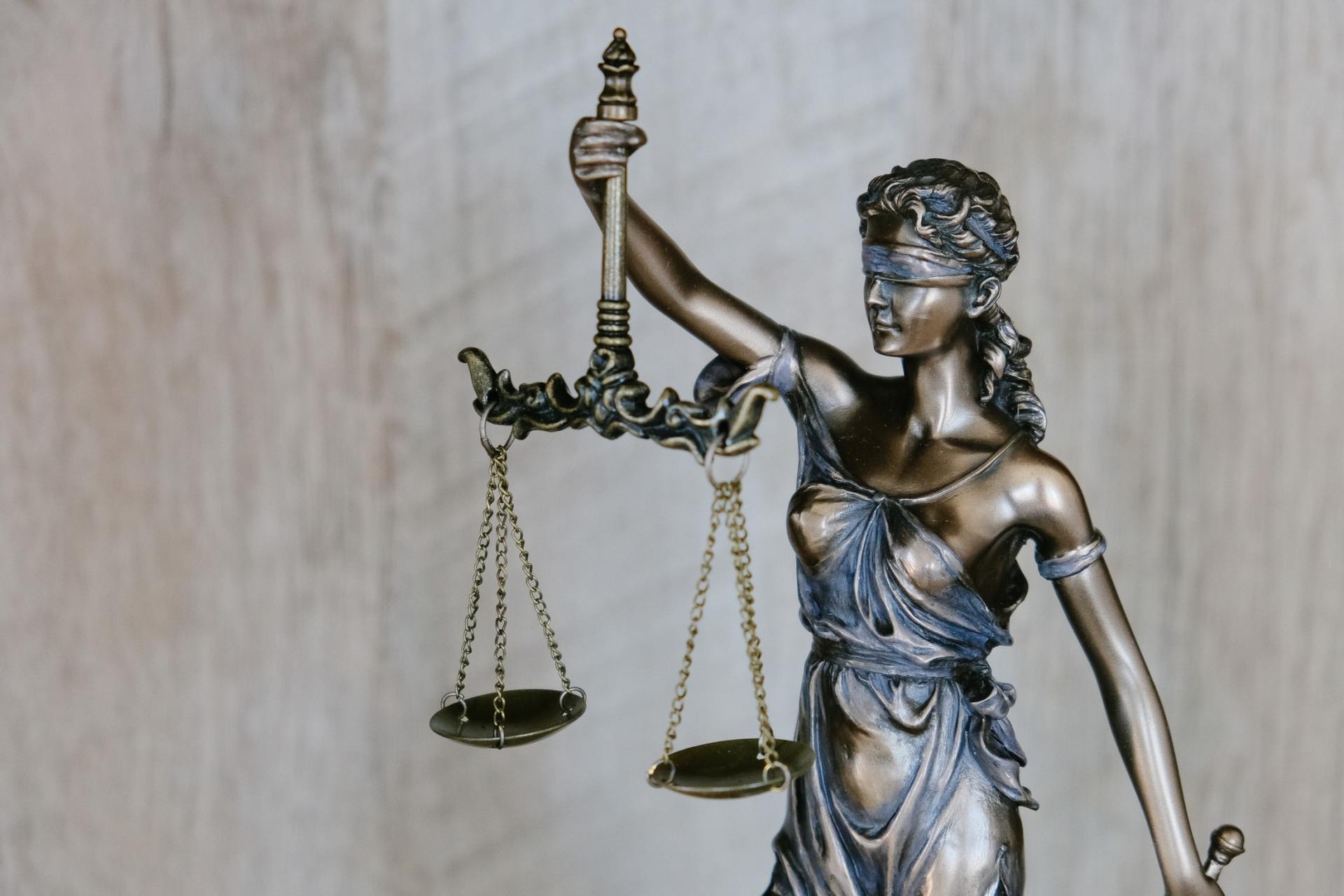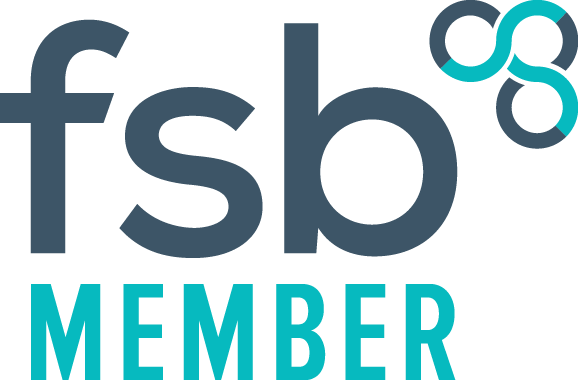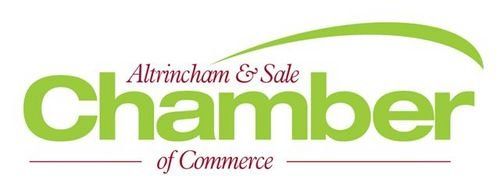Example Position Statement
Example Position Statement
NWMS are not legal advisors and this document, and any other document on this website, is provided for information purposes only and its contents are not intended to replace consultation of any applicable legal sources or the necessary advice of a legal expert, where appropriate. Neither the NWMS nor any person acting on its behalf can be held responsible for the use made of this document. NWMS takes no responsibility whatsoever of the contents of the this or any document on its website.
WITHOUT PREJUDICE
FOR THE PURPOSES OF MEDIATION ONLY
IN THE HIGH COURT OF JUSTICE
CLAIM NO E30MA777
BUSINESS AND PROPERTY COURTS IN MANCHESTER
BUSINESS LIST (CHD)
BETWEEN:
WIDGET SUPREMO LIMITED
Claimant
and
BODGEM LTD
Defendant
POSITION STATEMENT ON BEHALF OF THE CLAIMANT
Initial Considerations
It is normal practice for the Position Statement (“PoS”) to be sent to the mediator several days before the mediation so that the mediator has the opportunity to consider the facts and the bundle prior to the mediation. It will be exchanged with the other side. The procedure usually suggests 7 days. Most mediators appreciate everyone is busy and if you cannot comply with the suggested figure of 7 days liaise with the mediator, who will normally be very flexible.
The PoS is not a pleading or a skeleton argument. It is a summary of the facts as your client sees them. It is your opportunity to explain the facts upon which you want the mediator to concentrate in a succinct manner.
Mediators will suggest the PoS should be about 8 pages long as a guideline. Sometimes this is too short and sometimes too long. Do not get too worried about length and concentrate on quality in getting the explanation of your case over to the mediator.
As it is not a pleading it need not be as formal and just needs to be succinct and logical. It is more like a Case Summary than a Particulars of Claim.
Consider if the PoS can be set out into areas under separate headings. There will be a section for the Introduction where you will need to set out the parties and a summary of the dispute. You will then need a section for the Factual Background. After that you will need to think what is important for the mediator.
For example,
- does the case hinge on the facts – a section for Factual Matrix;
- are there certain issues which need to be resolved – a section for Issues;
- is the offer history particularly complex – a section for Offers;
- if there are difficult areas of case law and interpretation a section on the Law.
The opposition know the facts of the case but bear in mind their client will read the PoS. This is an opportunity for you to put in clear terms the issues in your case (it is not a pleading confused by denials admissions and legal terms) and the strengths of your case or any message you want to get across their client. You should give some thought to the tone and message you want to give. For example,
- If liability is against you, apologetic setting the scene for a settlement
- If they have difficulty on overcoming a clause in the contract, emphasise its effect and that it cannot be over turned in law
- If their defence is based on implausible factual evidence, stress the strength of your own evidence on this point
Possibly stress that they will have a torrid time on cross examination.
When drafting the PoS bear in mind that the opponent will see this document. Should you wish to set out confidential matters such as your position on settlement, the law, liability, then send a separate statement which is for the eyes of the mediator only.
Please note that we have tried to give examples and a flavour below. It is not a case and the factual matrix may not flow throughout. The facts are not always clear, which is what happens in a mediation and gives the parties the opportunity to create doubt. On occasions we have given examples of sections form other cases to demonstrate issues.
INTRODUCTION
To reinforce the WP nature of the document, you may wish to add an initial paragraph such as the following:
1. This Position Statement isprovided by the Claimants solely for the purpose of mediation. It or its contents are not to be provided to any third parties besides the Claimant, the Defendant, and their respective professional advisors.
2. The Parties have agreed a Mediation Bundle and reference is made to documents by page number alone from the Bundle. [There is a core bundle which the Mediator is invited to read and an additional bundle containing correspondence and ancillary documents to which the mediator may want to refer as he reads the core bundle].
3. At pages 1 to 7 is a copy of the timeline and a dramatis personae to assist the mediator. [This is sometimes useful if there are a lot of parties and the events take place over a number of years]
THE PARTIES
4. The Claimant, Widget Supremo Limited (“Supremo”) is a leading manufacturer of widgets with an international reputation for producing widgets of a high quality punctually.
5. The Defendant, Bodgem Limited (“Bodgem”) is an engineering firm which manufacturers machinery for various industries and wants to get into the widget market..
THE DISPUTE
The next paragraphs should be a brief summary of the dispute for the mediator and possibly where the parties are up to in any proceedings.
6. The dispute relates to the performance of a contract for the delivery of a widget making machine (“the Machine”) which was delivered 9 months late and was then defective and could not be put into commission for a further 9 months during which time the Claimants were unable to fulfil orders and lost contracts worth £175,000.
7. The Claimant issued proceedings on 30 November 2017 for breach of contract and seeking damages. A copy of the Claim Form and Particulars of Claim can be found at pages 8 to 16 and a copy of the Defence can be found at pages 17 to 28. The Parties have just completed disclosure and have now agreed to mediate.
THE BACKGROUND
The background section should:
- Include a factual summary.
- If the sequence of events is essential then a chronology would be helpful.
- Explain what are the legal issues in dispute
- Explain what are the factual issues in dispute
- Explain what is your / your Client’s position on those factual issues?
The mediator needs to understand your Client’s position on each area of dispute – you can make this clearer by using a new heading for each dispute.
You may also wish to state what issues have prevented the dispute being settled - outline the proposals and counter-proposals (if any) which have been made.
Discuss your ideas of how various issues in the dispute could be resolved. You have the opportunity to look at non-legal solutions to the problem - unlike a Court judgment you have a wide range of solutions, some as simple as an apology.
If there are technical legal issues you should refer to any especially relevant legal authorities that are considered essential for the mediator to be aware of, which either support or undermine any position which is being taken in the mediation. Copies should be provided.
Refer the mediator to any documents which it is considered essential for the mediator to read before the mediation.
8. In January 2015, the Claimant entered into negotiations with Bodgem for the supply of the Machine. It was made clear to Bodgem during the course of the negotiations (as an example see letter dated February 2015 page 132) that time was critical in view of the work secured by Supremo.
9. There were extensive negotiations as a result of which Bodgem reduced the price for Machine from £750,000 to £500,000. They were not the cheapest supplier, but they were not the most expensive.
10. On 1 August 2016 Supremo submitted a purchase order with a delivery date of 1 October 2015 and an installation date by 1 November 2015. The machine was to be delivered on 1 July 2016 and was finally installed and certified operational on 27 April 2017.
11. Bodgem came up with all sorts of excuses that it was waiting for the supply of parts and equipment from a Malaysian supplier. The correspondence is full of such excuses but they are in fact irrelevant and the mediatorshould ignore this aspect of the claim.
12. When the machine arrived it was not fit for purpose. The specification was wrong, the air-conditioning unit would not work, the cooling system leaked and the main press would not cut within tolerance. It took Bodgem nine months to remedy these problems. In the 18 months delay Supremo lost significant orders and reputation within the marketplace. It had been stressed to Bodgem that time was of the essence for the delivery and installation schedule. Their performance was woeful.
13. Bodgem, keen to get into the market of supplying widget machines were happy to agree certain liquidated damages clauses if delivery was late, see clauses 17 and 18 of the Contract.
THE DEFENCE
14. Despite the voluminous correspondence, the only defence can be broken down into two strands:
that the Purchase Order was not signed by a director of the Defendant as required by their Conditions of Sale, but a consultant without authority, so the contract is not a binding contract. Supremo’s Conditions of Purchase do not form part of the Contract and so many of the remedies the Claimant seeks in the contract for the Machine are not available to it.
The Authority
15. The suggestion that Fred Smith didnot have the authority to sign is totally refuted. At all times Supremo will say that Mr Smith gave the indication that he had authority to sign for Bodgem, as was corroborated by the Defendant’s personnel and the correspondence. For example, Mr Smith signed emails as “Sales Manager Bodgem Limited” on 2 June 2015 relating to service codes and also on 27 July 15 relating to delivery performance.
16. Rob Conman, Bodgem’s Managing Director, acknowledged that Mr Smith was an employee of Bodgem. The reality is that if there is any real issue here, and it is thought in reality it is just a smoke screen, it is a governance issue for Bodgem and not a matter for Supremo.
17. Further, there is no explanation of (1) the mistaken description behind Mr Smith’s signature on the numerous emails where Supremo have found his signature before the logo of Bodgem and (2) that the majority of the emails were copied to the senior management of Bodgem.
18. As can be seen from the correspondence (pages 70 - 88) Bodgem has not answered or explained any of these inconsistencies but has chosen to ignore them because, in reality, there is no credible explanation it can advance.
The Battle of the Forms
19. This is not a dispute about the Agreement but a dispute about the effect of the contract documentation leading up to the signing of the Contract.
20. Supremo’s case is that they placed a Purchase Order on 1 August 2016 with their Conditions of Purchase on the rear of the document. The Order was acknowledged by email and the next document received from Bodgem was an invoice which is a post contract document and although it may have had their Conditions of Sale on the reverse it is of no contractual effect. This was the first contract, so it is not a case of contract terms being formed by a course of dealings.
21. The fact that Bodgem publish their terms and conditions on their website is irrelevant as they were not drawn to Supremo’s attention.
PROCEDURAL POSITION
Sometimes the procedural position may be relevant. It may stress the urgency and gives the mediator an idea of the issues which will be concerning the solicitors
22. This has not been the quickest case to reach trial and there have been some procedural delays along the way. There have been long delays as we tried to obtain disclosure of the file relating to the delays in the manufacture of the Machine and importing it from Malaysia.
23. The Claim Form was issued in November 2017 and the Particulars of Claim were served in December 2017. The Defence was served on 1 March 2018. The Claimant served a lengthy Reply on 14 May 2018. Disclosure has taken place.
24. There was a case management conference on 14 June 2018. Both parties filed Precedent H’s which were challenged leading to revised budgets of £73,371 for the Claimant and £91,916 for the Defendants. There is a pre-trial review listed for 3 March 2019 and the case is listed for a 3 day hearing on 3 April 2019. The directions have been put on hold pending the mediation and Orders stayed pending the mediation.
25. With availability and holidays the mediation has been squeezed in to avoid interrupting the Court time table and the parties have avoided the cost of preparing witness statements which both parties will have to scramble to do if the mediation does not settle.
THE DAMAGES
Set out the remedy your client is seeking or in the case of the Defendant their response to the remedy claimed.
Mediation is different to Court, in that the focus isn’t on who is right or wrong legally, but on reaching a settlement that both parties can live with. Focus on the remedies that your Client could accept.
The aim of mediation is to reach a solution, rather than to determine who is right or wrong on every legal or factual issue.
Include figures and a breakdown where appropriate.
26. The Contract provided thatfor every month of delay either in delivering or installing the Machine there would be a payment of £10,000. The mediator is referred to the correspondence in the Bundle (pages 90 -101) dealing with these issues.
27. The delay was18 months and so the claim is £180,000. If Supremo was put to strict proof to prove its loss the damages would be significantly in excess of that sum say £300,000.
THE RELEVANT LAW AND ITS APPLICATION TO THIS CASE
This is an example from a different case relating to testamentary capacity. It provides an example of what to include when the law and its interpretation are relevant to the case. The Claimant had failed to understand the law and the relevance of the evidence and it was felt justified to give a full case law summary as it would be very relevant on the day of mediation.
Testamentary Capacity
1. The Claimant correctly refers to the case of Banks v Goodfellow (1870) LR 5 QB 548 as the leading cases on testamentary capacity but, importantly, the Claimant’s solicitors failed to acknowledge that the case also establishes that there is a presumption of mental capacity, which it is for the Claimant to rebut.
2. The testator must understand:
- The nature of her acts,
- The extent of the property of which she is disposing
- The nature of the claims on her
3. There is no evidence available to the Claimant to prove the Deceased did not understand her acts and the intention to exclude the Claimant from the will. The Claimant does not have the evidence to rebut the 3 elements. As there is no evidence to support the rebuttal of the presumption, the case must fail.
4. The Mental Capacity Act 2005 sets out a test that she should be considered to have the capacity to make a decision if she can understand the relevant information, retain it, use or weigh it to make the decision and communicate his or her decision.
5. The Defendant believes that the Deceased satisfied this test as well, but it is irrelevant as it was established in both the case of Walker v Badmin (2014) All ER 258 and in James v James (2018) EWHC 43 that the court must still follow the test for testamentary capacity as set out in the common law in the Banks case.
6. The Claimant is left attempting to rely on the case of Re: Simpson (1977) 121 SJ 224 which provides that there is a “golden rule” that where the testator is very old or seriously ill, the will ought to be witnessed by a medical practitioner who can confirm that he is satisfied of the capacity and understanding of the testator (“the Golden Rule”).
7. We do not challenge the Golden Rule and the Defendant agrees that it is unfortunate that the solicitor did not follow the Golden Rule - as there would have been no doubt in the Claimant’s mind and the parties would not have been put to all this expense.
8. However, the subsequent case law referred to below confirms the lack of a medical practitioner’s signature to the will is not fatal to its validity. Although following the Golden Rule can be said to be good practice, if every old person who prepared a will had to have their will witnessed by a medical practitioner, the system would come to a grinding halt. In practice, practitioners in this field have to use common sense and their own judgment.
9. In the case of Wharton v Bankroft and others (2011) EWHC 3250 the court held that the criticism of the solicitor for the failure to observe the Golden Rule was misplaced and on this occasion the solicitor was entitled to make his own assessment of the testator. It seems here the solicitor made his own assessment and should not be criticised.
10. In the case of Gill v Woodhall (2010) EWCA Civ 1430 again the court applied common sense and accepted that as the will had been properly executed after being prepared by a solicitor and read over to the testator, it raised a strong presumption that it represented the testator‘s instructions at the time. Mr. Armstrong confirms he read the will to the Deceased on this occasion and was satisfied that she understood its content. Therefore, in this case too. there is a strong presumption that the Deceased understood her acts with no evidence to rebut the presumption given by the Gill case. Coupled with the presumption from the Bank’s case, the Claimant has no prospect of overturning the Will.
11. The Gill case also confirmed that the court should be cautious about accepting a challenge to a will and should only do so when there was a weight of evidence to be considered. In this case all you have are some very general assumptions all of which can be easily disproved and be shown to have no merit. The Court will be invited to say the Claimant does not even overcome this hurdle.
12. The Defendant will also rely on the case of Julie Hawes v Elizabeth Burgess (2013) EWCA Civ 94 which confirmed that where a will has been professionally prepared on instructions and then explained to the testator by an independent and experienced solicitor, it will be markedly more difficult to challenge on the validity on the grounds of the mental capacity or lack of knowledge. In this claim that is exactly what happened and while it may have been prudent to follow the Golden Rule, it was not fatal as Mr Armstrong a practitioner of 30 years plus did just that.
13. The Hawes case also established that people can make a valid will even if they are old or infirm, even with the terms of the will are hurtful to those who have legitimate expectations of a testamentary benefit and are disappointed. Again, this is particularly relevant to and against the Claimant’s case. The Defendant would in any event deny the Claimant had a legitimate expectation as a grandchild in any event.
14. There is no evidence to rebut the presumption of testamentary capacity from the Bank’s case and the extra comfort provided by the Wharton, Gill and Hawes cases. The Claimant’s case will fail at the first hurdle.
Undue Influence, Coercion, Fraudulent Calumny
15. When considering the question of undue influence, the court has held in the cases of Edwards v Edwards (2007) WTLR 1387 and Cowdery v Cranfield (2011) EWHC 1616 that burden of proof is on those who assert it and the person challenging the will (i.e the Claimant) must establish:
- evidence over and above mere persuasion.
- that the coercion and pressure were to such an extent that it overpowered the freedom of action by the testator.
16. In this case, the Claimant has no evidence whatsoever, let alone the evidence to substantiate the suggestion that the Deceased was over powered by the Defendant. Those who knew the Defendant and the Deceased will give evidence to say they did not have that type of relationship.
17. The case of John Edwards v Edwards, Coombs and the partners of KTP Solicitors (2007) EWHC 1119 established that undue influence means an influence excised by coercion to the extent that it overrides the testator’s will. When considering coercion it was defined as the pressure that overpowers the volition without convincing the testator‘s judgment. In so far as the Claimant has relied on fraudulent calumny, it is necessary to establish a poisoning of the mind with dishonest or false aspersions on an individual’s character.
18. The Claimant’s evidence fails to meet any of the tests and the only thing which the Claimant can allege is that the Defendant told his mother they had fallen out.. That is factually correct and so is not poisonous nor made dishonestly.
COSTS
Costs is a crucial part of the mediation. You should give as much detail as you can to the mediator and be prepared to be challenged on your own figures. Your client should be warned that he will also be challenged on his ability to afford the costs
A breakdown of legal costs to date should be set out as well as the likely costs of going to trial. You should include any experts and counsels fees (if known or if not the likely cost).
28. The costs of both parties came under the scrutiny of the Court at the Costs Case Management Conference when the budgets were imposed by the District Judge. The agreed figures can be found on the amended Precedent H’s filed at Court (pages 75 and 93).
29. Supremo have incurred £40,000 of fees to date and project another £75,000 if the matter goes to trial. It is insured for those costs.
30. Bodgem have incurred £35,000 to date and have much work to do if they are to prepare for trial and project £100,000. Concern has been raised by Supremo that the latest accounts reveal that Bodgem is technically insolvent and cannot afford to take the matter to trial. If the mediation is not successful Supremo will make an application for security for costs. [This type of comment is useful for the mediator as it gives him an insight of the financial position. It is also useful from your point of view as it warns the Defendant you are aware of the position and a problem they will face If they don’t settle]
Conclusion
As a conclusion, briefly summarise the dispute and repeat the desire to resolve the case.
Dependent on the strengths and weaknesses will dictate the terms and strength of the comments
If you feel you have a strong case there is no harm in taking a firm stance but be careful and always consider how the other side might take the remarks.
31. Supremo approaches this mediation in good faith and with a view to resolving the dispute. It will adopt a pragmatic and commercial approach to achieve a settlement. However, it remains his case that the damages it has incurred from the very clear breach of contract is £180,000.
32. Supremo recognisesthat if agreement cannot be reached then the Court proceedings will continue and the parties will have to expend substantial sums in order to resolve the matter at trial. It has undertaken detailed cost risk benefit analysis and has decided that in the absence of a suitable settlement offer it will proceed to trial. Bodgem must appreciate it will also face an immediate application for security for costs.
33. It should be noted that the Claimant has insurance in place and is fully prepared to take this matter to Trial.
Attendees
Only focus on the people attending from your own side
Adam Supremo: Managing Director
Steve Jones: Commercial Manager
Rachel Smith, Advanced Legal Solicitors (Solicitor): Lead Negotiator
Save time
Save time
Save costs
Save costs
Get a result
Get a result
Remove risk
Remove risk
Meet your expert Mediators
Meet the specialists
Meet your expert Mediators









